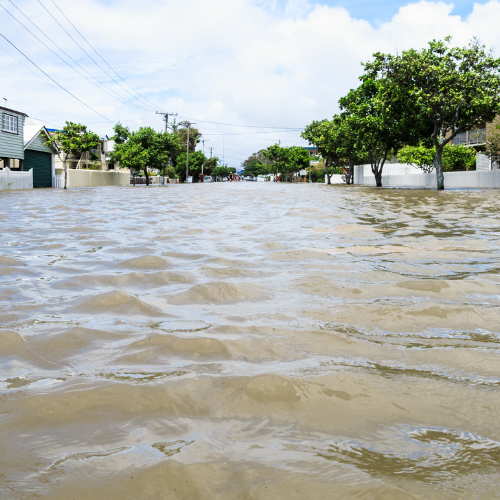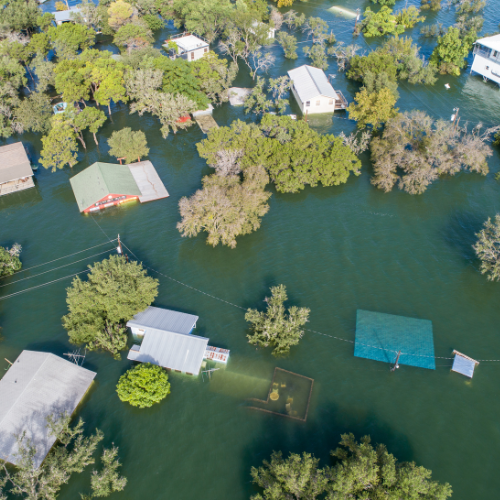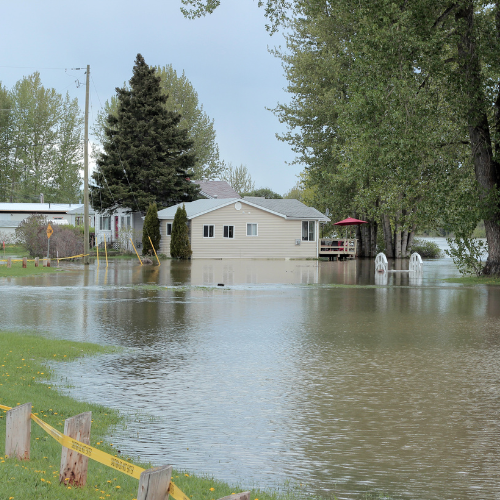Managing Your Workforce After a Natural Disaster: Furloughs, Layoffs, and Reductions in Force
Minnesota has experienced unprecedented levels of flooding this summer. Some businesses have shut down or limited operations because of the historic flooding. Businesses impacted by natural disasters may need to make temporary or permanent changes to their workforce due to the financial stress or lack of work caused by a national disaster. There are a few cost-saving measures that businesses can implement to blunt the effect of a natural disaster and start the path to financial recovery. Furloughs, layoffs, and reductions in force provide businesses with a possible solution. It is important, however, that businesses understand the differences between these three cost-saving measures and their legal implications.

What is a Furlough?
A furlough is when an employer requires employees to work fewer hours or take unpaid time off for a certain period of time. For example, an employer can reduce full-time employees’ hours to 30 hours a week or require employees take multiple weeks off of unpaid leave. Employers commonly use furloughs when they have financial issues or lack of work for employees. An employer should use a furlough when the employer wants to avoid terminating employees and intends to bring back employees to their regular work schedules. Furloughs, however, may turn into a layoff if an employer later decides not to recall employees and instead end the employees’ employment.
Employers must be aware of whether furloughed employees are non-exempt or exempt employees. Exempt employees must receive their full predetermined salary for any week where the exempt employee performs any work without regard to the number of days or hours worked. This is important because an employer deducting from an exempt employee’s pay, or reducing the exempt employee’s pay, based on the number of hours worked during a furlough will cause an employee to lose their exempt status. Employers can avoid this issue by requiring exempt employees to take at least one week of leave, or take other weekly increments of leave, because employers are not required to pay exempt employees for any workweek that an exempt employee did not perform any work. However, employers need to ensure exempt employees are still paid at least minimum wage to avoid employees losing their exempt status.
Furloughed employees normally stay on the employer’s payroll but still may be able to collect unemployment benefits. Furloughed employees may lose employer-provided benefits. Employers should therefore review their benefit plans and be aware of whether reducing employees’ hours or requiring periods of unpaid time off will cause employees to lose their benefits, which may require employers to send COBRA notices to the furloughed employees.
What is a Layoff?
A layoff is a temporary separation of employment due to lack of work or financial issues. The term “layoff” is used when employees’ temporarily end due to no fault of the employees, and the employer hopes or plans to recall employees back to work. Lad off employees do not stay on payroll and often lose employer-provided benefits but normally receive unemployment benefits. Employers should familiarize themselves with their benefit plans before laying off employees to see if a layoff will trigger any requirements by the employer, such as sending COBRA notices to the laid off employees.
Reduction in Force
A reduction in force (RIF) is when an employer permanently eliminates a job position within the company with no intention of filing the position with new hires. A layoff can turn into or be similar to a RIF if the employer permanently decides not to recall the laid off employees. A RIF causes employees to go off payroll and lose employer-provided benefits, but they can normally receive unemployment benefits.
Legal Obligations & Consideration
Volunteers
Deciding which employees to lay off or to include a RIF often involves tough choices for employers. To ease an employer’s burden, an employer can ask for employees to voluntarily be laid off or included in a RIF. One way to incentivize volunteers is for the employer to offer a severance package. Employers can also ask employees to voluntarily take early retirement.
Implementing Objective Criteria to Enforce a Layoff or RIF
However, an employer looking to perform a layoff or RIF will likely have to make its own decision on which employees to layoff or include in a RIF. It’s imperative that employers develop objective criteria to determine how to select employees for a layoff or RIF to avoid or prevail against discrimination claims and retaliation claims. Common selection criteria include seniority, employment status (full-time and part-time or exempt and non-exempt), skill-based, merit based, and job position. Employees may try to argue the layoff or RIF was discriminatory because it had a disparate impact on a protected class-such as race, ethnicity, sex, gender, age, etc.-or argue they were retaliated against for engaging in protected activity, such as making a whistleblower claim, taking Family and Medical Act Leave, or taking Minnesota Earned Sick and Safe Time Leave. Employers implementing objective criteria to select employees for a lay off or a RIF will greatly minimize the employer’s liability risk in a discrimination claim or retaliation claim. Employers must simply be able to show that the employees selected for a layoff or RIF would have been chosen regardless of their protected class status or recent engagement in protected activity.

Severance Agreements and the Older Worker Benefit Protection Act
Additionally, employers can protect themselves by asking employees to sign a severance agreement before being laid off or subject to a RIF. A severance agreement is a contract where an employee agrees to waive and forego many potential legal claims they may have against the employer usually in exchange for a sum of money that the employees is not otherwise entitled to receive. In other words, an employee agrees not to sue the company in exchange for receiving payment and such payment is in addition to any earned wages or earned commissions the employer is already owed. Both Minnesota and federal law require that a severance agreement to be enforceable but there are some noteworthy requirements to be aware of. A Minnesota employee, regardless of age, always has 15 days to rescind a severance agreement after signing it. If a Minnesota employee is at least 40 years old, then the federal Older Worker Benefit Protection Act (“OWBPA”) requires that an employee must also have at least 21 days to consider signing the severance agreement; the 15-day rescission period remains the same. furthermore, the OWBPA requires the consideration period be extended from 21 days to 45 days if there are at least two employees subject to a layoff or RIF; again, the 15-day rescission period remains the same. When two or more employees are subject to a layoff or RIF, the employer must give written notice of the following information to each adversely affected employee:
- the class, unit, or group of all individuals selected for the layoff or RIF
- the eligibility factors used to select employees for the layoff or RIF
- time limits of the layoff (if applicable)
- the job titles of all employees selected for the layoff or RIF
- and the ages of all employees selected for the layoff or RIF
Worker Adjustment and Retraining Notification Act
Finally, large employers may also be subject to the Worker Adjustment and Retraining Notification (“WARN”) Act. If an employer has at least 100 full-time employees or at least 100 employees who, in the aggregate, work at least 4,000 hour per week (not including overtime), then the employer must comply with the WARN Act when:
- the employer permanently or temporarily (at least 30 days) closes a plant that causes at least 50 full-time employees to permanently or temporarily lose their jobs
- the employer conducts a mass layoff that causes at least 33 percent of full-time employees, or at least 50 full-time employees, to lose their jobs, be laid off for more than six months, or have their work schedule reduced by more than 50 percent during each month of a six-month period.
Employers subject to WARN generally must give a 60-day advance notice to the following parties; all the affected employees or their collective bargaining representative; the Minnesota Department of Employment and Economic Development; and to the chief elected official of the unit of local government within which such closing or layoff is to occur. The 60-day notice requirement, however, can be shortened if a plant closing or mass layoff is caused by “business circumstances that were not reasonably foreseeable.” A natural disaster would likely qualify as an unforeseeable event that allows employers to substantially shorten the 60-day notice period.
The flooding in Minnesota and the surrounding areas this summer has inflicted significant hardships on employers but there are options available that employers can implement to ease the burden. WFJ is here to help. Please contact us if you have any questions about furloughs, layoffs, or RIFs.













